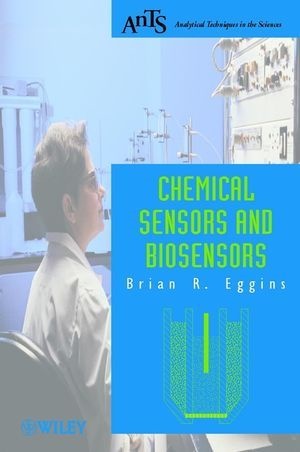En savoir plus
Informationen zum Autor Brian R. Eggins is the author of Chemical Sensors and Biosensors, published by Wiley. Klappentext Chemical sensors and biosensors are among the fastest growing of analytical techniques. This text provides an up-to-the-minute overview of a wide range of sensing systems, discussing the elements of different transducers used in sensors and the selective elements that are employed. The style is relatively non-mathematical and informal in approach. Key features and subjects covered include the following: * Sensors based on both electrochemical and photometric transducers * Mass-sensitive sensors * Thermal-sensitive sensors * Performance factors for sensors * Examples of applications * Detailed case studies of five selected sensors * 30 discussion questions with worked examples and 80 self-assessment questions * 140 explanatory diagrams * An extensive bibliography The book's approach is ideal for students at BTEC (HND and HNC) level, as well as for BSc degree and postgraduate students of analytical and physical chemistry. Chemical Sensors and Biosensors will, in addition, be invaluable to all those concerned with the environmental and biomedical applications of such systems Zusammenfassung Covering the developments in sensor technology and electronic sensing devices, this book provides aid for those wishing to use chemical and biosensors. It covers key features and subjects that include: sensors based on both electrochemical and photometric transducers; mass-sensitive sensors; thermal-sensitive sensors; and more. Inhaltsverzeichnis Series Preface Author's Preface Acronyms, Abbreviation and Symbols About the Author Introduction Introduction to sensors Sensors and biosensors - definitions Aspects of sensors Transduction Elements Electrochemical transducers - introduction Potentiometry and ion selective electrodes: the Nernst equation Voltammetry and amperometry Conductivity Field effect transistors Modified electrodes, thin film electrodes, microelectrodes and screen printed electrodes Photometric sensors Sensing Elements Introduction Ionic recognition Molecular recognition - chemical recognition agents Molecular recognition - spectroscopic recognition Molecular recognition - biological recognition agents Immobilisation of biological component Performance Factors Introduction Selectivity Sensitivity Time factors Precision, accuracy and repeatability Different biomaterials Different transducers Some factors affecting the performance of sensors Electrochemical Sensors and Biosensors Potentiometric sensors - ion selective electrodes Potentiometric biosensors Amperometric sensors Conductometric sensors and biosensors Applications of FET sensors Photometric Applications Techniques for optical sensors Visible absorption spectroscopy Fluorescent reagents Indirect methods using competitive binding Reflection methods Light scattering techniques Mass Sensitive and Thermal Sensors The piezo-electric effect Surface acoustic waves Thermal sensors Some Specific Applications Determination of glucose in blood - amperometric biosensor Determination of ng levels of copper (I) in water using anodic stripping voltammetry using an electrode modified with a complexing agent Determination of several ions simultaneously - "the laboratory on a chip" Determination of a...
Table des matières
Series Preface
Author's Preface
Acronyms, Abbreviation and Symbols
About the Author
Introduction
Introduction to sensors
Sensors and biosensors - definitions
Aspects of sensors
Transduction Elements
Electrochemical transducers - introduction
Potentiometry and ion selective electrodes: the Nernst equation
Voltammetry and amperometry
Conductivity
Field effect transistors
Modified electrodes, thin film electrodes, microelectrodes and screen printed electrodes
Photometric sensors
Sensing Elements
Introduction
Ionic recognition
Molecular recognition - chemical recognition agents
Molecular recognition - spectroscopic recognition
Molecular recognition - biological recognition agents
Immobilisation of biological component
Performance Factors
Introduction
Selectivity
Sensitivity
Time factors
Precision, accuracy and repeatability
Different biomaterials
Different transducers
Some factors affecting the performance of sensors
Electrochemical Sensors and Biosensors
Potentiometric sensors - ion selective electrodes
Potentiometric biosensors
Amperometric sensors
Conductometric sensors and biosensors
Applications of FET sensors
Photometric Applications
Techniques for optical sensors
Visible absorption spectroscopy
Fluorescent reagents
Indirect methods using competitive binding
Reflection methods
Light scattering techniques
Mass Sensitive and Thermal Sensors
The piezo-electric effect
Surface acoustic waves
Thermal sensors
Some Specific Applications
Determination of glucose in blood - amperometric biosensor
Determination of ng levels of copper (I) in water using anodic stripping voltammetry using an electrode modified with a complexing agent
Determination of several ions simultaneously - "the laboratory on a chip"
Determination of ato-mole levels of trinitrotoluene (TNT) - antibody with a luminescent transducer
Determination of flavanols in beers
Commentaire
"...It would be a valuable addition to university libraries..." (Chemistry in Britain, November 2002))
"...a useful contribution to introducing the subject to a wider range of analytical scientists..." (Chemistry & Industry, 3 March 2003)
"...covers a wide range of sensoring systems...accessible to a broad audience." (Metrohm Information, Vol.33, No.2 2004)

